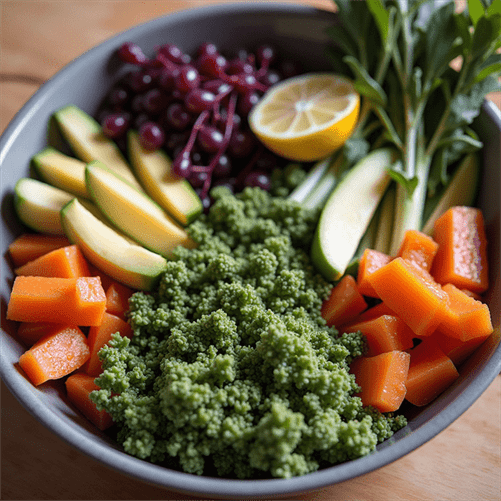
Transitioning to a low-carb lifestyle is challenging enough for one person—but trying to bring your entire family along for the journey can feel like an impossible task. Between picky eaters, busy schedules, and the higher cost of some low-carb ingredients, many parents find themselves stuck in an exhausting cycle of preparing multiple meals or facing dinnertime battles.
This guide will help you navigate the challenges of feeding a family while maintaining a low-carb approach. You’ll discover practical strategies for transitioning your family to healthier eating habits, kid-approved low-carb meals, ways to balance family favorites with nutritious options, smarter shopping techniques, and systems that make low-carb eating sustainable for the long term.
How to Transition Your Family to Healthier Eating
The key to successfully transitioning your family to a lower-carb lifestyle is patience and strategic implementation. Abrupt changes typically trigger resistance, while gradual adjustments allow taste preferences and habits to evolve naturally.
Focus on Addition Before Subtraction
Instead of immediately eliminating favorite foods, start by adding healthier options:
- Introduce one new vegetable dish each week alongside familiar foods
- Add protein to carb-heavy meals to improve satiety and blood sugar response
- Incorporate healthy fats that make vegetables more appealing (butter on veggies, dressings on salads)
- Serve fruit for dessert alongside smaller portions of traditional treats
This approach creates positive associations with healthy foods rather than feelings of deprivation.
The Gradual Replacement Method
Slowly substitute lower-carb alternatives in familiar recipes:
- Week 1-2: Use 25% cauliflower rice mixed with 75% regular rice
- Week 3-4: Shift to 50/50 mixture
- Week 5-6: Try 75% cauliflower rice with 25% regular rice
- Week 7-8: Transition to 100% cauliflower rice for some meals
The same gradual approach works for pasta alternatives, reduced-sugar recipes, and other substitutions.
Implementation by Family Member
Different family members may require different approaches:
- Spouses/Partners: Share educational resources and involve them in meal planning
- Teenagers: Connect food choices to things they care about (sports performance, skin clarity, stable mood)
- School-age children: Involve them in food preparation and decision-making
- Toddlers/Preschoolers: Focus on exposure and positive food experiences rather than strict limitations
The Education-Without-Pressure Approach
Build understanding without creating food anxiety:
- Discuss the benefits of protein and healthy fats in age-appropriate ways
- Talk about how different foods make our bodies feel
- Avoid labeling foods as “good” or “bad”
- Model a healthy relationship with all foods
- Emphasize listening to hunger and fullness cues
This approach lays the groundwork for children to make better food choices independently as they grow.
Kid-Friendly Low-Carb Meals
Children naturally gravitate toward carbohydrate-rich foods, but with creativity and persistence, you can develop a repertoire of low-carb meals they genuinely enjoy.
Breakfast Options
Morning meals that start the day with stable energy:
- Egg cups: Mini frittatas baked in muffin tins with various add-ins (cheese, ham, spinach)
- Protein-focused pancakes: Made with almond flour, eggs, and cottage cheese
- Overnight “oats”: Chia seeds, hemp hearts, and unsweetened coconut mixed with Greek yogurt and a small amount of berries
- Breakfast meat and veggie scrambles: Sausage or bacon with eggs and diced vegetables
- Yogurt parfaits: Full-fat Greek yogurt with nuts, seeds, and limited berries
Lunch Solutions
Packable options that won’t come home uneaten:
- Lunchbox kebabs: Cubes of cheese, meat, and cherry tomatoes on skewers
- Deconstructed sandwiches: Lunch meat, cheese, and vegetables with a dipping sauce
- Thermos fillers: Hearty soups, chili, or last night’s dinner leftovers
- Upgraded lunchables: DIY versions with quality ingredients
- Lettuce or low-carb wraps: Filled with favorite proteins and toppings
Family-Friendly Dinners
Main meals that satisfy everyone:
- Taco bar: Seasoned meat with various toppings where family members can add shells or tortillas as desired
- Breakfast for dinner: Omelets, frittatas, or pancakes made with lower-carb ingredients
- Burger night: Serve with lettuce wraps for some and buns for others
- “Pasta” night: Zucchini or spaghetti squash noodles with various sauce options
- Meatza: Pizza using a ground meat crust topped with sauce, cheese, and favorites
- Sheet pan meals: Protein and non-starchy vegetables seasoned and roasted together
Snack Strategies
Quick options for hungry moments:
- Portable proteins: Hard-boiled eggs, cheese sticks, lunch meat rollups
- Veggie vehicles: Cucumber rounds, bell pepper strips, or celery loaded with cream cheese, guacamole, or nut butter
- Homemade trail mix: Custom combinations of nuts, seeds, and minimal dried fruit
- Keto fat bombs: Small, satisfying bites made with nut butter, coconut oil, and sugar-free chocolate
- Greek yogurt parfaits: Unsweetened yogurt with berries and a sprinkle of nuts
Balancing Family Favorites with Healthy Choices
Few approaches fail faster than completely eliminating beloved family recipes. Instead, find ways to balance tradition with nutrition.
The Low-Carb Makeover Method
Transform favorite recipes with strategic substitutions:
- Pasta dishes: Use zucchini noodles, spaghetti squash, hearts of palm pasta, or shirataki noodles
- Rice-based meals: Substitute cauliflower rice, broccoli rice, or a blend with regular rice
- Potato favorites: Replace with mashed cauliflower, turnips, or radishes
- Bread-based items: Try cloud bread, cheese wraps, or lettuce for wrapping
- Baked goods: Experiment with almond flour, coconut flour, and natural sweeteners
The key is maintaining familiar flavors and textures while reducing carbohydrate content.
The Accompaniment Strategy
When a beloved dish can’t be modified:
- Keep the main dish as is but in smaller portions
- Surround it with abundant low-carb sides
- Ensure plenty of protein and healthy fat for satiety
- Focus on the quality of higher-carb choices when included
The Deconstruction Approach
Separate meal components to accommodate different needs:
- Serve stir-fry meat and vegetables that family members can add to either cauliflower rice or regular rice
- Create pasta bars where some can use zucchini noodles and others regular pasta
- Make taco fillings that work equally well in lettuce wraps or traditional shells
This approach minimizes additional cooking while honoring preferences.
The Special Occasion Framework
Create clear categories for higher-carb favorites:
- Establish regular but limited times for traditional versions of family favorites
- Connect these meals to special occasions or achievements
- Maintain perspective about occasional indulgences
- Focus on mindful enjoyment rather than restriction
This framework helps children develop a balanced relationship with food while still supporting overall health goals.
How to Grocery Shop Smarter
Strategic shopping saves money and reduces the temptation of carb-heavy convenience foods.
List-Based Shopping
Always shop with a detailed plan:
- Create weekly meal plans before shopping
- Generate a comprehensive shopping list organized by store section
- Include quantities needed to prevent overbuying perishables
- Note which stores offer the best prices on specific items
This approach reduces both food waste and unnecessary carb purchases.
Perimeter Power
The store perimeter typically contains the most low-carb friendly options:
- Begin in the produce section for vegetables and limited fruits
- Visit the meat department for quality proteins
- Select full-fat, unsweetened dairy products
- Explore the frozen section for vegetables and convenient protein options
- Venture into center aisles only for specific items on your list
Bulk Buying Strategies
Strategic bulk purchases can reduce both cost and preparation time:
- Buy family packs of meat to portion and freeze
- Purchase nuts, seeds, and shelf-stable low-carb items in bulk when on sale
- Consider wholesale club memberships if they offer enough compliant products
- Organize a buying club with other low-carb families for bulk discounts
Label Reading Efficiency
Develop quick label scanning habits:
- Check total carbs first, then subtract fiber to calculate net carbs
- Watch for hidden sugars in ingredient lists (anything ending in “ose”)
- Be wary of “low-fat” claims, which often indicate added sugars
- Compare brands for the lowest carb options
- Look for hidden carbs in sauces, condiments, and seasonings
Budget-Friendly Low-Carb
Make lower-carb eating affordable:
- Focus on seasonal vegetables
- Utilize less expensive protein sources like eggs, chicken thighs, and ground meat
- Buy nuts and seeds from bulk bins
- Take advantage of sales by stocking your freezer
- Grow simple vegetables and herbs when possible
- Use food-saving apps to get discounted items near their sell-by date
Making Low-Carb Eating Sustainable

The most nutritious diet is ultimately the one your family will follow consistently. These approaches help create sustainable habits.
The Meal Prep System
Advance preparation creates easy low-carb options:
- Dedicate 1-2 hours on weekends to meal preparation
- Pre-cook proteins (grilled chicken, taco meat, meatballs)
- Prepare versatile bases (cauliflower rice, spiralized vegetables)
- Wash and chop vegetables for quick cooking and snacking
- Portion snacks into grab-and-go containers
Having compliant foods readily available prevents convenience-driven carb consumption.
The Freezer Strategy
Use your freezer to expand quick-meal options:
- Double recipes and freeze half for future meals
- Prepare individual portions of soups, stews, and casseroles
- Freeze marinated meats ready to cook
- Keep convenient frozen vegetables for quick side dishes
- Label everything clearly with contents and date
These freezer meals provide low-carb options on hectic days when you might otherwise resort to carb-heavy takeout.
The Rhythm Method
Establish predictable meal patterns:
- Create theme nights that streamline decision-making (Meatball Monday, Taco Tuesday)
- Develop a 2-3 week rotating meal plan
- Establish consistent breakfast and lunch options for weekdays
- Schedule regular “clean out the fridge” meals to prevent waste
These rhythms reduce decision fatigue while ensuring variety.
The Involvement Strategy
Engage family members in the process:
- Let children select recipes from pre-approved options
- Teach age-appropriate cooking skills for low-carb dishes
- Assign meal responsibilities based on interest and ability
- Create a family cookbook of favorite low-carb recipes
- Involve everyone in meal evaluation and improvement
This approach builds ownership and reduces resistance.
The Progress Perspective
Maintain a realistic view of family dietary changes:
- Celebrate improvements rather than expecting perfection
- Acknowledge that adaptation takes time
- Focus on health benefits beyond carbohydrate reduction
- Stay flexible during special occasions and travel
- Remember that stress around food can be more harmful than occasional higher-carb meals
Low-Carb Lifestyle Choice
Feeding a family while following a low-carb approach doesn’t have to mean cooking multiple meals or facing constant resistance. By implementing thoughtful transition strategies, finding kid-friendly recipes, balancing traditions with nutrition, shopping efficiently, and building sustainable systems, you can support your health goals while maintaining family harmony.
Remember that dietary changes happen gradually. Each small step toward reduced-carb cooking builds skills and acceptance that make the next steps easier. Many families find that low-carb eating eventually becomes their new normal—one that supports better health, stable energy, and enjoyable meals together.
The ultimate goal isn’t dietary perfection but rather a sustainable approach that nourishes your family physically while maintaining the joy and connection of shared meals. Finding that balance is worth the effort, and with the strategies outlined here, it’s entirely possible to cook low-carb for your family without losing your mind in the process.

